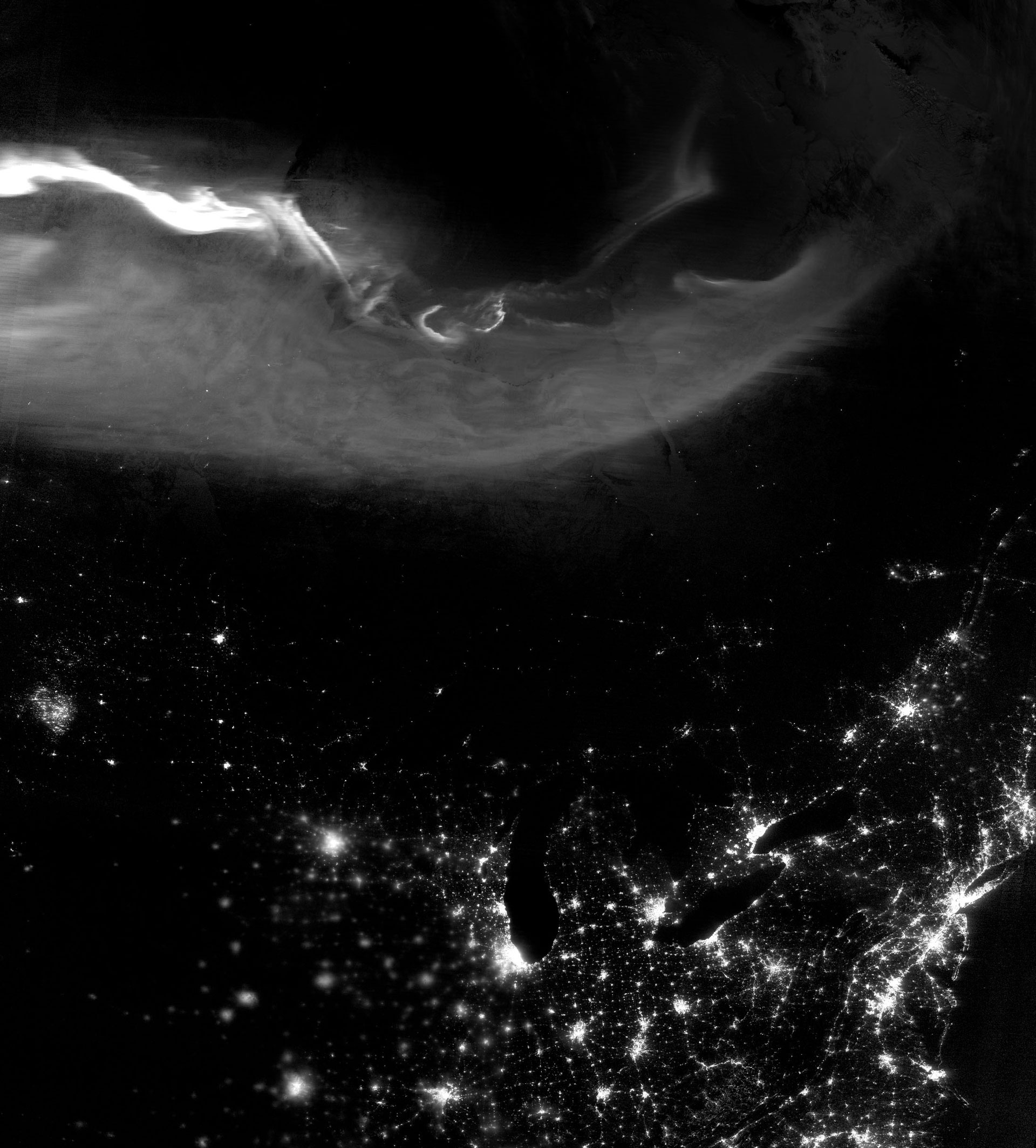The satellite of the Finnish nuclear power plant shows the Aurora Borealis over North America
Our sun provides light and heat that powers our plants, our solar panels and our weather. But its influence extends over the horizon to our nights as well. The Sun, our closest star, bathes the Earth in a steady stream of energetic particles, magnetic fields, and radiation that can stimulate our atmosphere and illuminate the night sky like the aurora borealis or northern lights.
3:46 AM ET on April 21, 2018 Visible Infrared Imaging Radiometer Suite (VIIRS) received this image of the northern lights over North America from the Finnish nuclear power plant satellite. The night image was made using the “day-night band” of VIIRS, which detects light at different wavelengths from green to near-infrared and uses filtering techniques to monitor signals such as airglow, aurora borealis, wildfires, city lights and reflected moonlight. .
In this image, the probe detected visible light emissions that occurred when energetic particles rained down from Earth’s magnetosphere into the oxygen and nitrogen gases in the upper atmosphere. Around April 19, the Sun spewed a powerful stream of particles and electromagnetic energy—a powerful burst of the solar wind—that reached Earth a few days later and scrambled our magnetic field. The interaction between these solar emissions and our magnetic field causes the particles already trapped around the planet to accelerate towards the atmosphere. Collisions illuminate the northern lights.
Scientists recently discovered a new type of atmospheric light emission associated with the aurora borealis known as strong thermal emission rate enhancements, or STEVEs. STEVE is a thin purple band of light that can appear in the presence of Aurora, although it was not reported during the April 21st event. You can participate in a citizen science project to track the Northern Lights and help discover new STEVE sightings Aurorasaurus.
Annotated image: NASA Earth Observatory




